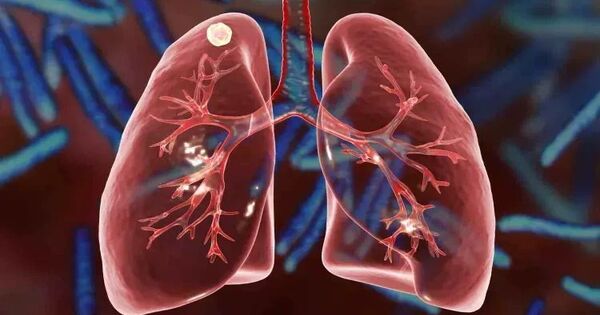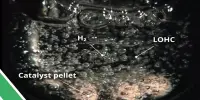Doctors can detect probable disease-related irregularities in the respiratory system by assessing the sound vibrations created by the airflow induced within the lungs and bronchial tree during normal breathing, as well as those produced by the larynx during vocalization.
In AIP Advances, researchers show how ultrasound technology can detect low-amplitude movements caused by vocalizations on the chest’s surface. They also demonstrated how to use an airborne ultrasound surface motion camera to map these vibrations over short periods of time to show how they evolve.
The thorax, the area of the body between the neck and abdomen, gives medical experts a significant insight into a patient’s respiratory health. Doctors can detect probable disease-related irregularities in the respiratory system by assessing the sound vibrations created by the airflow induced within the lungs and bronchial tree during normal breathing, as well as those produced by the larynx during vocalization.
AUSMC is a new imaging technology that allows the observation of the human thorax surface vibrations due to respiratory and cardiac activities at high frame rates of typically 1,000 images per second. The technology shares the physical principle of conventional ultrasound Doppler imaging, but it does not require a probe to be applied on the skin.
Mathieu Couade
However, among other flaws, most respiratory assessments are subjective and only as good as the exam itself. While multipoint electronic stethoscopes have improved the ability to detect irregularities during normal breathing, there is still a lack of technical equipment that can help define surface vibrations caused by vocalizations.
In AIP Advances, published by AIP Publishing, a team of French researchers demonstrated the efficiency of ultrasound technology in detecting low-amplitude movements caused by vocalizations on the chest surface. They also demonstrated how to use the “airborne ultrasound surface motion camera” (AUSMC) to map these vibrations over short periods of time to show how they evolve.
“AUSMC is a new imaging technology that allows the observation of the human thorax surface vibrations due to respiratory and cardiac activities at high frame rates of typically 1,000 images per second,” said author Mathieu Couade. “The technology shares the physical principle of conventional ultrasound Doppler imaging, but it does not require a probe to be applied on the skin.”

The researchers tested the AUSMC on 77 healthy volunteers to image the surface vibrations caused by natural vocalizations with the aim of reproducing the “vocal fremitus” — vocalization-induced vibrations on the surface of the body — as typically analyzed during physical examination of the thorax. Surface vibrations induced were detectable on all subjects, they reported.
“The spatial distribution of vibrational energy was found to be asymmetric to the benefit of the right size of the chest, and frequency dependent in the anteroposterior axis,” indicated Couade. “As expected, the frequency distribution of vocalization does not overlap between men and women, with the latter being higher.”
Ongoing clinical trials will employ the AUSMC to identify lung diseases. However, the researchers are optimistic that the technology, along with artificial intelligence algorithms, will herald in a new era of thoracic inspection in which vibration patterns may be identified. This would provide a much clearer picture of respiratory health and allow for more accurate diagnosis of respiratory disorders.
















